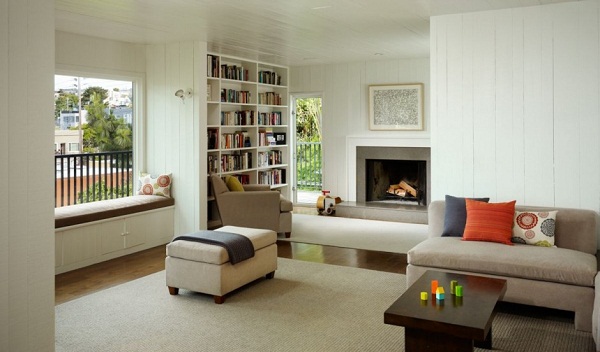PROJECT OVERVIEW
This project involved the expansion, interior renovation, and furnishing of an old cottage on a triple-wide lot in San Francisco. The project was completed in two phases marking the personal trajectory of the client’s life from bachelor to father of three. Early strategic and functional interior renovations were followed by a third-floor addition with comprehensive interior, exterior and landscape improvements.
ARCHITECTURE AND DESIGN
When our client purchased the property, the integrity of the original cottage had suffered a series of haphazard additions over a 100-year period. The mandate for all new work was threefold: expand the house while staying within the existing footprint to protect the mature gardens; integrate a modern architectural vocabulary with the older construction; and build sustainably. The new architecture reasserts the cottage’s unique identity by fluidly knitting together a modern vocabulary of open interiors, connection to the outdoors and contemporary materials with the endearing and quirky characteristics of the original building such as its mid-lot siting, irregular footprint and rough-sawn paneling.
The third floor expansion provided an opportunity to reduce energy consumption and employ sustainable materials. The introduction of operable, high-performance wood windows and the open vertical core of the central stair increase natural daylight and ventilation, while reclaimed wood floors from a 19th century barn add a warm patina consistent with the original cottage. Interior glass panels at the stair rails and entry canopy provide a light and planar contrast with naturally figured finishes. Stone slabs used in the fireplace surround and counters are solidly vernacular while their square-edged profiles are decidedly modern. Rhythmic and refined metal railings, trellis details and chimney cladding provide a crisp counterpoint to the natural wood and stone forms. The variegated pattern of the new, FSC-certified cedar siding recalls the existing, interior wood paneling, adding a subtle historic texture to the modern exterior profile of the expanded building.
A minimal architectural & furnishing palette emphasizes the visual connection between interior and exterior, green gardens and blue sky. A unified design vocabulary acts as a datum for registering shifting sunlight throughout the day. Furnishings combine refurbished and reupholstered family items that support sustainable reuse with new modern pieces such as a sculptural, custom-fabricated walnut kitchen island, geometric breakfast table, mid-century chairs and iconic fabrics. The integrated architectural and interior design engenders sophistication and playfulness, creating a portrait of this modern family in its early years.













0 comments:
Post a Comment